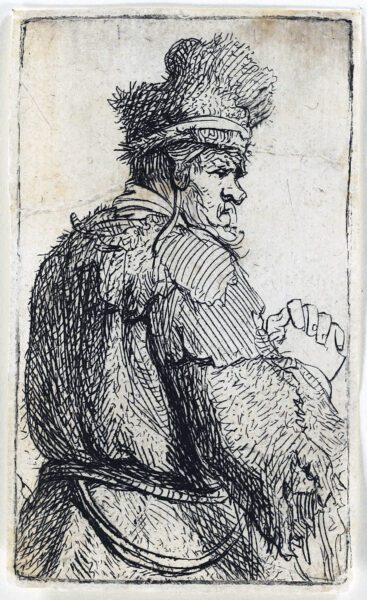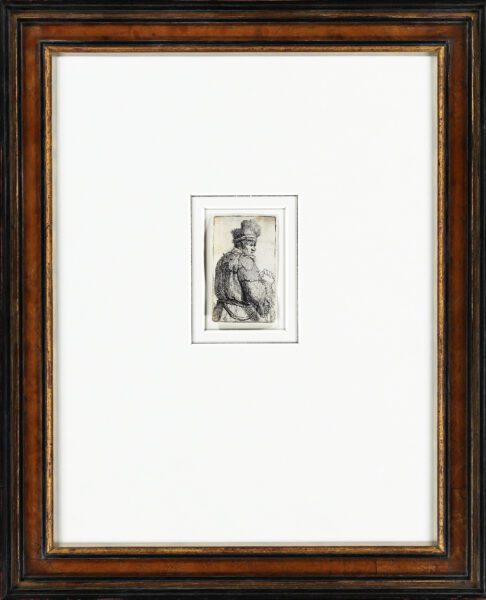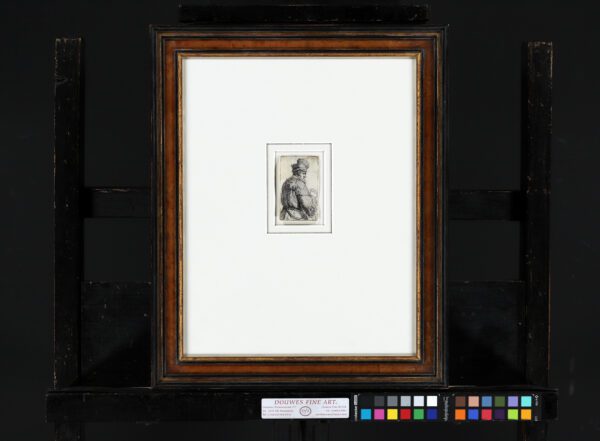“Old Man seen from behind, Profile right: Half-figure”, c. 1629
etching, with touches of drypoint: 7,5 x 4,5 cm;
with small margins on all sides.
"*" indicates required fields
Notes
During his lifetime, Rembrandt’s extraordinary skills as a printmaker were the main source of his international fame. Unlike his oil paintings, prints travelled light and were relatively cheap. For this reason, they soon became very popular with collectors not only within, but also beyond the borders of the Netherlands.
Another five small depictions of men’s heads, but this time it is certain that they did not originate as independent prints. Originally, they were all on the same copperplate. After Rembrandt cut up the plate, he completed each print individually. This working method was unusual and characterizes Rembrandt as an artist who often strayed off the beaten path.
Literature
Bartsch 143; Hind 41C;
The New Hollstein, 2013, no. 33a (this impression cited),
a very fine impression of the rare third state (of seven);
Plate not in existence – with Nowell-Usticke (1967):
RR+ – A rare print, cut from the entire plate
Provenance
- Richard Dawnay, 10th Viscount Downe (1903-1965), Wykeham Abbey, Yorkshire (Lugt 719a); his posthumous sale, Sotheby’s, London, 7 December 1972, lot 139 (£ 360; to Colnaghi).
- With P. & D. Colnaghi & Co., London (their stocknumber C 26388 in pencil verso), and Frederick Mulder, London.
- Sam Josefowitz (Lugt 6094); acquired from the above in 1973;
- then by descent to the present owners.
- Christie’s London, 2024
- Private collection, The Netherlands





